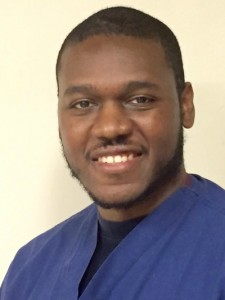It has been roughly a year since I entered the biomedical technician career field. While I felt confident and capable coming out of school, I quickly learned that there were a number of things I still needed to learn through on-the-job experience. We all understand that every organization or hospital has certain operating procedures and policies that address how that particular facility handles day-to-day operations within its various departments. With that being said, however, I believe that some of what I have learned applies to all facilities. Here, then, are five important things that I believe every healthcare professional should know.
1) Network reset procedures and passwords and server locations. Every year, more and more equipment becomes network-capable. As a result, the frequency of outages and reboots will also increase. In order to compensate for this increase, we must have a plan for quick response and repair. The proper reboot procedures are important to know so that outage downtime can be minimized. Along with the reboot procedures, you should be sure to know the locations of your facilities’ servers. You may need to troubleshoot or perform the reboots at the server if a remote option isn’t available. Most server rooms and closets are locked, so keep those keys handy! Lastly, it would not be a bad idea to compile a list of your facilities’ server passwords and log-in information. Your team members will appreciate you for thinking ahead and choosing not to wake them for a server log-in after-hours!
2) PHI security policies. The security of patients’ protected healthcare information (PHI) is crucial, and goes hand in hand with patient safety. Know your organization’s policies and regulations regarding the handling of sensitive PHI materials. From your perspective, the importance of safeguarding a patient’s personal information is equal to that of safeguarding their health. Also be sure to adhere to your facility’s procedures regarding your use of personal devices and computers. It may seem trivial, but a simple phishing scam could lead to the exposure of patient data. It’s important to take all threats seriously and take every precaution.
3) Life-support and high-risk equipment. It is important to know where all life-support and high-risk equipment is located, along with any replacement or loaner units. The documentation on these items should be precise and accurate. It would also be wise to keep vendor information for any high-risk equipment readily available in case you ever need tech support in a hurry. Understand that with any high-risk piece of equipment, there will some type of risk management procedure. Policies for some equipment may dictate that only certified personnel can provide service. There can be many more important topics incorporated in any risk management strategy, so be sure to know exactly what’s expected of you with respect to your facility’s life-support and high-risk equipment.
4) Contaminated equipment handling and room entry and exit procedures. You should know the proper procedures when entering or exiting a contaminated area or room. In addition, when handling contaminated equipment, you should know and adhere to the proper decontamination procedure before and after servicing. This would also apply to the tools used. Blood is the most common substance that you will encounter. You must treat every encounter with this bodily fluid as if it were infected with a blood-borne pathogen. Always assume the equipment is contaminated and adhere to decontamination procedures. Keep in mind that while the outside of the unit may be clean, you cannot know its condition inside. Be prepared, and always utilize the proper personal protective equipment when servicing medical equipment.
5) Other support agency or department contact information. To provide the best service possible, keep contact information for other support agencies readily available. This will expedite an easy transition to another support department if the required service is outside of your job description. A good follow-through is always better than a simple hand-off. The key to being a good biomed or healthcare professional lies in the first impression and the last impression you make with the customer. When you show up to a job location, be prepared. Bring your tools, and know who and what you are looking for. Most importantly, smile! Overwhelm them with a willingness to help. Remember, it’s our duty to help the clinical staff help patients. In a stressful situation of equipment failure, the presence of a helpful individual goes a long way. When you depart, leave a lasting impression. Confirm what you do know about the situation and be as clear as you can about what you don’t know. Let the first and last things they remember about you be completely positive. You want your customers to know that they can trust you. Understand that the key to being successful is gaining the trust of your customers. I believe the trust you build will help you become more efficient.
The Value of Reflection
Of course, the advice I offer here is all based on my personal experiences and a bit of trial and error. Thankfully, I have been fortunate enough to receive some great mentoring within my department. I often reflect on my past experiences and what I could have done better or more efficiently. In most cases, I realized that if I had been aware of certain things, I could possibly have performed a better service. The five things I have written about here come from reflecting on situations in the past where I feel I could have performed better. In each case, I came to the same conclusion: I needed to educate myself more about my environment and how it could affect my job.
As you think about how you could apply these five things to your career, you should also reflect on your personal experiences and how you could have possibly provided a better service. Use that reflection on your past as a stepping-stone to learning more about your organization’s processes and procedures.
Carl V. Jones II is a biomedical equipment technician at Baylor Medical Center, Garland, Tex. For more information, contact editorial director John Bethune at [email protected].






